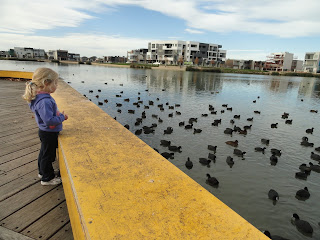Creating child friendly cities
This topic comes up from time to time in our Plantastic blog. How do we create cities that accommodate and meet the needs of families and children? Sustainable Cities Collective compiled a list of ten ways that we can build child-friendly cities.
Density
The benefit of city life comes with the proximity and accessibility to services and amenities. As more people choose to live closer to cities, we need to create a mix of different types of compact housing to allow more density. A mix of housing options needs to be considered to accommodate future growth.
Family-oriented housing
Homes need to be designed to meet the needs of families. This includes apartments and houses that accommodate growing families in family-friendly neighbourhoods, close to open space and amenities.
Access to schools and childcare
Families require access to good quality childcare, primary and secondary schools (ideally in walking distance) so there isn’t a need to move further out to the suburbs to meet schooling requirements.
Access to public transport
Good public transport systems reduce the need for car use. Families who live near public transport and can connect with other forms of public transport to complete a journey can reduce the need for a car.
Walkability
While being able to walk to a destination is great, creating an enjoyable journey that allows families to walk in a safe and timely manner can be as important as the destination itself.
Bikeability
Again, being able to enjoy a safe and timely journey is important for families. Creating a series of connected bike lanes and paths (away from traffic) allows children to gain confidence.
Access to open space
With limited backyard space or no backyard space in the inner city, children need the freedom to run around and ‘be kids.’ Ideally, open space should be easily accessible by walking. Urban forests, community gardens and parks all increase wellbeing and help families to connect to the local community.
Access to amenities
Cities provide great access to a range of amenities like community centres, libraries, public pools and playgrounds. Families need easy access to these amenities to assist them in feel connected to the local community.
Public safety
Measures can be implemented to ensure a safe environment for children to enjoy their immediate surroundings while alleviating worry for parents.
Fun and whimsy
Child friendly public spaces that allow children to interact with everyday objects. Public piano anyone?
Jillian has provided some great ideas as to how to attract and retain families in cities. Can you think of any further ways in which planners can create family-friendly cities in Australia? If so we’d love to hear how.
To read the article click here.
By Kathryn Cuddihy
 |
| Image: Alastair Campbell |
Density
The benefit of city life comes with the proximity and accessibility to services and amenities. As more people choose to live closer to cities, we need to create a mix of different types of compact housing to allow more density. A mix of housing options needs to be considered to accommodate future growth.
Family-oriented housing
Homes need to be designed to meet the needs of families. This includes apartments and houses that accommodate growing families in family-friendly neighbourhoods, close to open space and amenities.
Access to schools and childcare
Families require access to good quality childcare, primary and secondary schools (ideally in walking distance) so there isn’t a need to move further out to the suburbs to meet schooling requirements.
Access to public transport
Good public transport systems reduce the need for car use. Families who live near public transport and can connect with other forms of public transport to complete a journey can reduce the need for a car.
Walkability
While being able to walk to a destination is great, creating an enjoyable journey that allows families to walk in a safe and timely manner can be as important as the destination itself.
Bikeability
Again, being able to enjoy a safe and timely journey is important for families. Creating a series of connected bike lanes and paths (away from traffic) allows children to gain confidence.
Access to open space
With limited backyard space or no backyard space in the inner city, children need the freedom to run around and ‘be kids.’ Ideally, open space should be easily accessible by walking. Urban forests, community gardens and parks all increase wellbeing and help families to connect to the local community.
Access to amenities
Cities provide great access to a range of amenities like community centres, libraries, public pools and playgrounds. Families need easy access to these amenities to assist them in feel connected to the local community.
Public safety
Measures can be implemented to ensure a safe environment for children to enjoy their immediate surroundings while alleviating worry for parents.
Fun and whimsy
Child friendly public spaces that allow children to interact with everyday objects. Public piano anyone?
Jillian has provided some great ideas as to how to attract and retain families in cities. Can you think of any further ways in which planners can create family-friendly cities in Australia? If so we’d love to hear how.
To read the article click here.
By Kathryn Cuddihy


Comments
Post a Comment